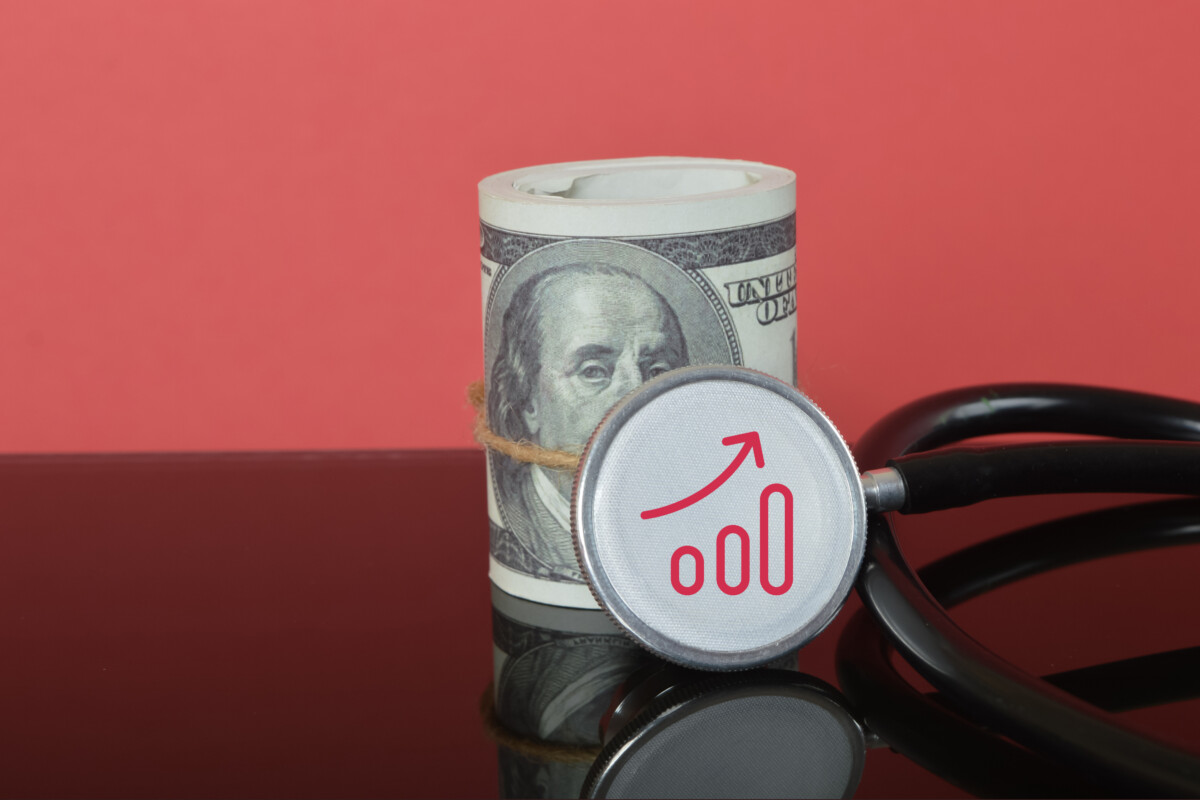Medicare Part B Costs Rise: Tips to Manage the Increase in 2026
[tta_listen_btn]
Understanding the rise in Medicare Part B costs rise is essential for beneficiaries, as it significantly affects their healthcare expenses. Medicare Part B covers vital services like doctor visits and outpatient care, but recent cost increases have raised concerns about budgeting and access to care.
Understanding Medicare Part B Costs
The Factors Behind Medicare Part B Costs Rise
Increased Healthcare Spending
A primary reason for the rise in Medicare Part B costs is the overall increase in healthcare spending in the U.S. As medical technology advances, costs often trickle down to beneficiaries.
- In 2023, Medicare Part B premiums rose by about 14.5%, with the average monthly premium now around $164.90, up from $148.50 last year.
Changes in Coverage and Services
The expansion of covered services also contributes to rising costs. Medicare has added new services, including telehealth, which, while beneficial, increases overall expenditures.
- The CMS reports a significant rise in covered telehealth services, impacting the Medicare Part B budget.
Inflation and Economic Factors
Economic conditions, particularly inflation, play a crucial role in rising costs. As living expenses increase, so do healthcare service costs.
- The Consumer Price Index (CPI) reflects this trend, leading to higher premiums and out-of-pocket costs for beneficiaries.
By understanding these factors, beneficiaries can better navigate the financial implications of rising Medicare Part B costs.
Call the official Medicare helpline at 1-800-MEDICARE (1-800-633-4227) to ask your questions or get more information.
Factors Contributing to Rising Costs
The rising costs of Medicare Part B are a significant concern for many beneficiaries, as healthcare expenses continue to climb. Understanding the factors contributing to these increases is essential for seniors relying on this program for medical needs. Medicare Part B covers vital services like doctor visits, outpatient care, and preventive services, making its costs critical for millions of Americans’ healthcare budgeting.
Several key factors influence the Medicare Part B costs rise.
Increased Healthcare Utilization
- More seniors are seeking medical care, leading to higher demand for Medicare Part B services.
- The number of Medicare beneficiaries is projected to grow from 62 million in 2020 to over 78 million by 2030, increasing overall program costs.
This aging population naturally raises healthcare service demand, putting pressure on Medicare Part B and driving up costs for beneficiaries.
Rising Prescription Drug Costs
- Prescription drug prices have risen, impacting overall healthcare costs, including those covered by Medicare Part B.
- Drug prices have increased by 33% over the past five years, contributing to financial strain on Medicare.
Technological Advancements
- New medical technologies often come with higher costs, increasing Medicare Part B expenses.
- Innovations can lead to increased spending, as advanced treatments raise care costs.
Understanding these factors is crucial for navigating Medicare’s complexities and associated costs.
Impact of Rising Costs on Beneficiaries
The recent rise in Medicare Part B costs has become a significant concern for many beneficiaries, impacting their budgets and access to essential healthcare services like doctor visits and outpatient care.
Understanding the Impact of Rising Costs on Beneficiaries
As Medicare Part B costs rise, beneficiaries, particularly those on fixed incomes, are feeling the financial strain. Nearly 50% of Medicare beneficiaries have incomes below 200% of the federal poverty level, making it challenging to absorb these increases. This situation forces individuals to make difficult choices between necessary medical services and other essential living expenses, potentially leading to worse health outcomes.
Access to Healthcare Services
- Rising costs may lead beneficiaries to delay or forgo necessary treatments. A survey by the Medicare Rights Center found that 1 in 5 beneficiaries reported skipping care due to cost concerns.
Long-term Implications
- Increased costs can lead to higher out-of-pocket expenses, with the National Council on Aging reporting a 50% rise in spending over the past decade.
These trends can severely affect beneficiaries’ quality of life and increase reliance on public assistance, highlighting the need for policymakers to address these challenges.
Comparative Analysis of Medicare Part B Costs Over the Years
The rise in Medicare Part B costs is a significant concern for seniors and their families, directly impacting healthcare affordability for millions of Americans. A comparative analysis of these costs reveals important trends and influencing factors.
Historical Trends in Medicare Part B Costs
- In 2010, the standard monthly premium was about $110.50, increasing to approximately $144.60 by 2020.
- The average annual increase has been around 5%, though this can vary based on economic conditions.
This consistent upward trend in Medicare Part B costs can be attributed to inflation, increased healthcare utilization, and advancements in medical technology.
Factors Influencing Cost Increases
- Healthcare Inflation: Contributes significantly to rising premiums.
- Utilization of Services: More seniors accessing healthcare leads to higher costs.
- Legislative Changes: Adjustments in Medicare policies can impact rates.
Projected Future Costs
- Experts predict premiums could reach $160 or more by 2025.
- Cost-of-living adjustments for Social Security may not keep pace with these increases.
Beneficiaries should stay informed about these trends to effectively plan for their healthcare expenses.
Strategies to Manage Medicare Part B Expenses
The rise in Medicare Part B costs has become a significant concern for many seniors relying on this essential health coverage. As healthcare expenses continue to increase, it’s crucial to understand how to manage these costs effectively. Here are some strategies to help navigate the rising expenses associated with Medicare Part B.
Understand Your Coverage Options
- Review your Medicare plan annually to ensure it meets your needs.
- Consider supplemental insurance (Medigap) to cover out-of-pocket costs.
Each year, during the Open Enrollment Period, beneficiaries can reassess their plans to determine if a different option might provide better coverage at a lower cost. Medigap policies can also help cover costs not included in Medicare Part B, such as copayments and deductibles.
Utilize Preventive Services
- Take advantage of free preventive services offered by Medicare.
- Regular check-ups can help catch health issues early, reducing future costs.
Medicare Part B covers various preventive services at no cost, which can help avoid more expensive treatments later.
Explore Financial Assistance Programs
- Look into programs like Extra Help or Medicaid for additional support.
- State Pharmaceutical Assistance Programs (SPAPs) can provide financial relief.
If Medicare Part B costs become overwhelming, these programs can help make healthcare more affordable for seniors.
Future Projections for Medicare Part B Costs
The rise in Medicare Part B costs is a significant concern for millions of Americans who depend on this program for healthcare. Understanding these costs is essential for beneficiaries, especially as healthcare policies and economic factors evolve. Keeping an eye on future projections for Medicare Part B costs is vital for effective financial planning.
Several factors influence the future of Medicare Part B costs, including healthcare inflation, policy changes, and demographic shifts.
Healthcare Inflation
- Rising Medical Expenses: Healthcare costs are projected to increase by an average of 5.4% annually over the next decade, according to CMS.
- Impact on Premiums: As medical expenses rise, beneficiaries should anticipate potential increases in their monthly premiums, affecting their overall budget.
Policy Changes
- Legislative Adjustments: Changes in healthcare legislation can significantly impact costs, particularly policies aimed at controlling drug prices or enhancing preventive services.
- Funding Challenges: Ongoing financial pressures on the Medicare Trust Fund may lead to adjustments in cost allocation among beneficiaries.
Demographic Shifts
- Aging Population: By 2030, one in five Americans will be of retirement age, increasing demand for Medicare services.
- Increased Enrollment: More individuals enrolling in Medicare will likely raise costs and premiums for all beneficiaries.
FAQs: Medicare Part B Costs Rise
Q: Why are Medicare Part B costs rising?
A: Costs increase due to higher healthcare expenses, inflation, and projected Medicare spending.
Q: How much is the increase in 2025?
A: The standard Part B premium rises to $174.70 per month, reflecting annual adjustments.
Q: Who pays the increased costs?
A: All Part B beneficiaries pay the standard premium, though higher-income individuals may owe an additional amount called IRMAA.
Q: Can I lower my Medicare Part B costs?
A: While premiums are fixed, supplemental insurance like Medigap or Medicare Advantage may help cover additional expenses.
Q: How can I plan for rising Part B costs?
A: Budget ahead for higher premiums, review coverage options, and explore assistance programs if eligible.
Final Thoughts
Rising Medicare Part B costs are a reality, but staying informed helps you manage your healthcare budget. Planning ahead, understanding your coverage options, and exploring assistance programs can reduce the impact and give you peace of mind as costs increase.
Plans change. So can your coverage. Get your free Medicare quote now at NewMedicare.com or call 📞 (833) 203-6742!






